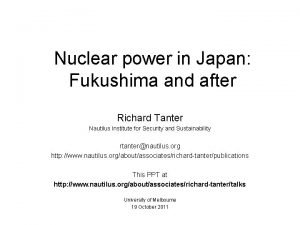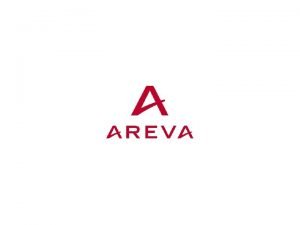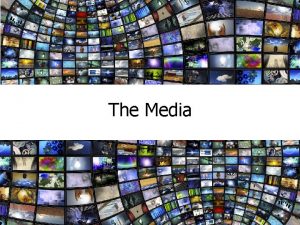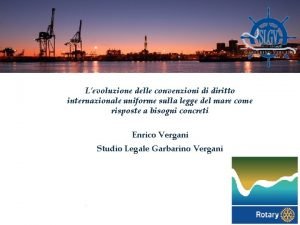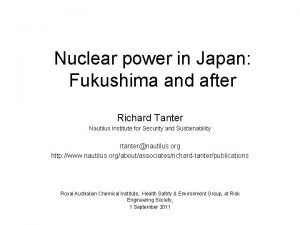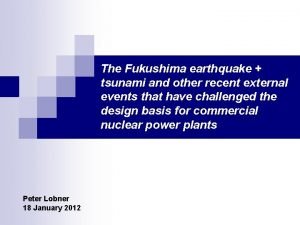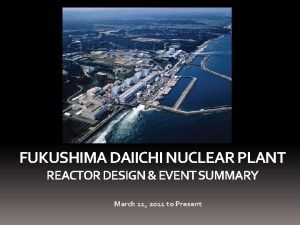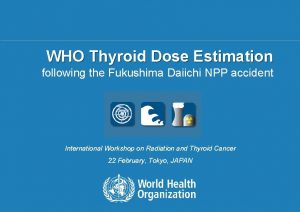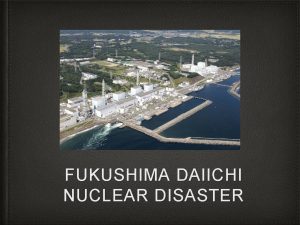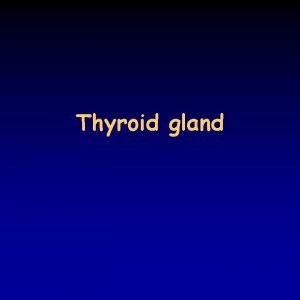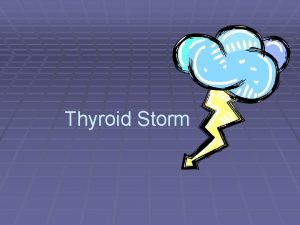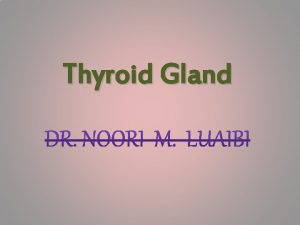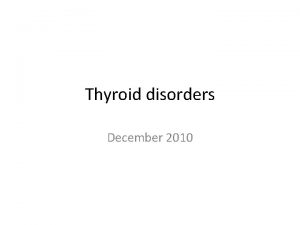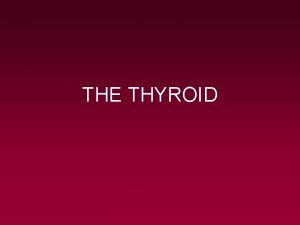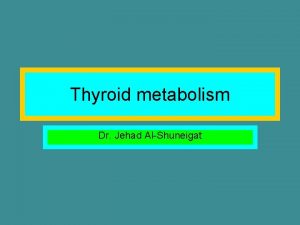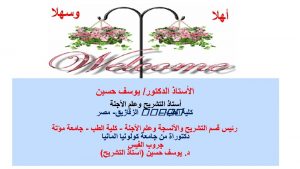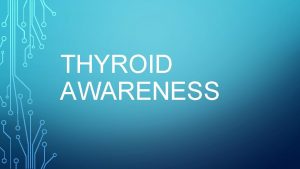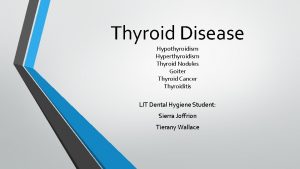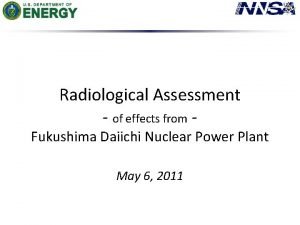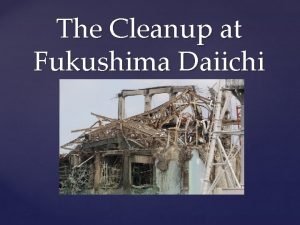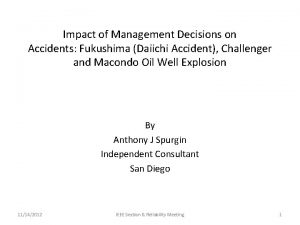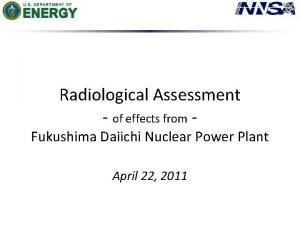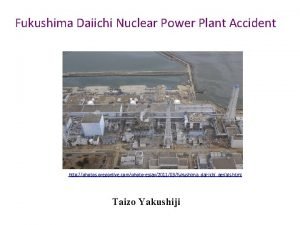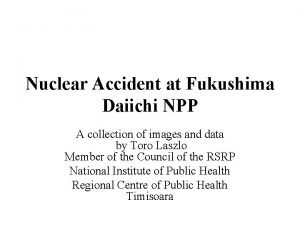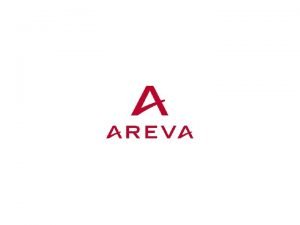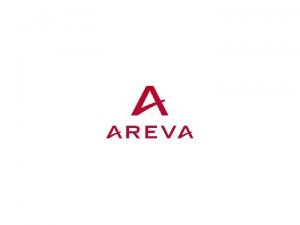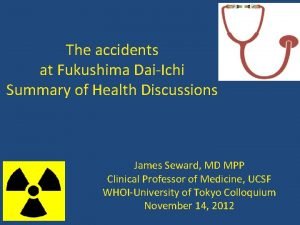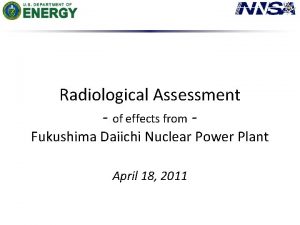WHO Thyroid Dose Estimation following the Fukushima Daiichi
































- Slides: 32

WHO Thyroid Dose Estimation following the Fukushima Daiichi NPP accident International Workshop on Radiation and Thyroid Cancer 22 February, Tokyo, JAPAN 1 | Radiation and Thyroid Cancer Workshop, February 2014, Tokyo, Japan

Outline l WHO's mandate l First-year dose estimation (preliminary dose estimation report) l Lifetime dose estimation (health risk assessment report) l Discussion 2 | Radiation and Thyroid Cancer Workshop, February 2014, Tokyo, Japan

World Health Organization l Function: act as the UN directing and coordinating authority on international health work l Objective: "the attainment by all peoples of the highest possible level of health" l Definition: "HEALTH is a state of COMPLETE physical, mental and social well-being and not merely the ABSENCE of disease or infirmity" (Constitution, 1948) 3 | Radiation and Thyroid Cancer Workshop, February 2014, Tokyo, Japan

Joint Radiation Emergency Management Plan (2010) 4 | Radiation and Thyroid Cancer Workshop, February 2014, Tokyo, Japan

Health Risk Assessment Purpose l Fulfil WHO's role and responsibilities under the Joint Radiation Emergency Management Plan l Provide information for policy makers and health professionals in WHO Member States, as well as international organizations l Give an indication of the health implications of the accident 5 | Radiation and Thyroid Cancer Workshop, February 2014, Tokyo, Japan

Health Risk Assessment The classical steps Hazard Identification Dose-response Relationship hed s i l b Pu 12 0 2 y a 23 M Risk Characterization Exposure Assessment 6 | Radiation and Thyroid Cancer Workshop, February 2014, Tokyo, Japan

Independent experts Lynn Anspaugh Mikhail Balonov Carl Blackburn Florian Gering Stephanie Haywood Jean-René Jourdain Gerhard Proehl Shin Saigusa Jane Simmonds Ichiro Yamaguchi and other contributors listed in the report Observers: 7 | Radiation and Thyroid Cancer Workshop, February 2014, Tokyo, Japan

Health Risk Assessment Hazard Identification Dose-response Relationship shed Publi y 2013 ruar b e F 28 Risk Characterization Exposure Assessment 8 | Radiation and Thyroid Cancer Workshop, February 2014, Tokyo, Japan

Independent experts Makoto Akashi Billy Amzal Lynn Anspaugh Anssi Auvinen Nick Gent Peter Jacob Dominique Laurier Charles Miller Otsura Niwa Roy Shore Richard Wakeford Linda Walsh Wei Zhang and other contributors listed in the report Observers: 9 | Radiation and Thyroid Cancer Workshop, February 2014, Tokyo, Japan

Scope Preliminary dose estimation l Radiation doses to the public for the first year following the accident l Doses characteristic of the average doses, assessed for different age groups in locations around the world l Excludes – Doses within 20 km of the NPP – Doses to workers – Health risks and public health actions 10 | Radiation and Thyroid Cancer Workshop, February 2014, Tokyo, Japan

Geographical coverage l Locations in Fukushima Prefecture where dose might be higher l The rest of Fukushima prefecture (less affected) l Other prefectures in Japan l Countries neighbouring Japan l Other regions of the world 11 | Radiation and Thyroid Cancer Workshop, February 2014, Tokyo, Japan

Dosimetric endpoints l Effective doses and equivalent doses to the thyroid for the first year after the accident in: – 1 year old infants, 10 year old children and adults – Exposure through drinking tap water used in the preparation of infant formula was considered for 6 month old infants – Foetus and breast-fed infants not separately calculated but considered in the text These age groups provide a sufficient level of detail to characterize radiological impact with consideration of younger, more sensitive population 12 | Radiation and Thyroid Cancer Workshop, February 2014, Tokyo, Japan

Assessed exposure pathways IAEA report on Environmental consequences of the Chernobyl accident and their remediation: twenty years of experience (2006) 13 | Radiation and Thyroid Cancer Workshop, February 2014, Tokyo, Japan

General approach l As far as possible, doses were based on environmental measurements (ground, soil, food…. ) l Primary source of measurement data for Japan was provided by the Government of Japan l Where data were insufficient, modelling was used based on an estimated source term in combination with environmental measurements l The dose estimation was based on data available up-to mid September 2011, and extrapolations were used to calculate the first -year dose 14 | Radiation and Thyroid Cancer Workshop, February 2014, Tokyo, Japan

Technical annexes 15 | Radiation and Thyroid Cancer Workshop, February 2014, Tokyo, Japan

Dose assessment inside Japan External and Inhalation l Input data based on measurements published by MEXT (Ministry of Education, Culture, Sports, Science and Technology in Japan) (http: //radioactivity. mext. go. jp/en/) l Doses estimated by the Russian Institute of Radiation Hygiene (IRH) and by the German Federal Office of Radiation Protection (Bf. S) l Similarities/differences in the methodologies discussed in the report 16 | Radiation and Thyroid Cancer Workshop, February 2014, Tokyo, Japan

Dose assessment inside Japan Ingestion l Doses estimated by WHO on the basis of measurements of radioactivity concentration l Monitoring of food originating in Japan (both as marketed in Japan and in foods exported from Japan) received/compiled by WHO through its INFOSAN network l Food consumption survey (2009) provided by the Japanese National Institute for Health and Nutrition (NIHN) 17 | Radiation and Thyroid Cancer Workshop, February 2014, Tokyo, Japan

Assumptions Ingestion doses inside Japan l All people in Fukushima prefecture consumed only food produced in Fukushima prefecture (possible dose overestimation) l Losses due to radioactive decay between the point of food ‘marketing’ and the time of consumption not included, neither are losses due to food preparation and losses during cooking Food sourcing and normal food distribution practices likely to have been significantly altered by the impact of the tsunami, the earthquake, and public protection measures 18 | Radiation and Thyroid Cancer Workshop, February 2014, Tokyo, Japan

Assumptions Consideration of protective actions l Movement of people – < 20 km radius: not considered (people evacuated) – 20 -30 km: not specific considerations for sheltering – "Deliberate evacuation zone": the assessment assumed relocation at 4 months l Stable iodine: it was assumed that KI tablets were not taken in Japan nor elsewhere l Food and water restrictions: the assessment does not explicitly model the effect of the imposition of food and water restrictions, it is implicit since the assessment is based on monitoring results reported by the Go. J 19 | Radiation and Thyroid Cancer Workshop, February 2014, Tokyo, Japan

Results Thyroid doses 20 | Radiation and Thyroid Cancer Workshop, February 2014, Tokyo, Japan

For the populations that were relocated, it was assumed that people stayed there up to 4 months and then moved to the least contaminated zones of Fukushima prefecture 21 | Radiation and Thyroid Cancer Workshop, February 2014, Tokyo, Japan

Sources of uncertainties l l Considerable variation in environmental monitoring Variability of human behaviour patterns and locations Air concentrations based on deposition measurements Inhalation dose estimates cautiously assume the iodine was in elemental vapour form l Degree of shielding provided by housing l Use of ICRP dose coefficients for Japanese population l Source term l …. . 22 | Radiation and Thyroid Cancer Workshop, February 2014, Tokyo, Japan

Validation of results Human measurements l Comparisons with in vivo human measurements – Thyroid monitoring of >1, 000 children in Fukushima between 24 and 30 March 2011 – Whole body monitoring on 3, 373 Fukushima residents – Monitoring of citizens coming back from Tokyo (France and Germany); monitoring of citizens living in Tokyo (Russia) l In vivo measurements may be regarded as broadly in accordance with the dose assessment, considering – "snapshots" at a particular time: do not include intakes that may have place later over the 1 st year and/or short-lived RN – only consider internal exposure (not external) 23 | Radiation and Thyroid Cancer Workshop, February 2014, Tokyo, Japan

Health risk assessment l The Lifetime Attributable Risk (LAR) for different cancer types requires the dose to the affected organ over the lifetime l The ratio of lifetime dose to firstyear dose was assumed to be 2, based on Chernobyl experience and taking into account differences with the Fukushima accident 24 | Radiation and Thyroid Cancer Workshop, February 2014, Tokyo, Japan

Example of annual dose distribution 25 | Radiation and Thyroid Cancer Workshop, February 2014, Tokyo, Japan

Thyroid dose General Population ü The approach used to calculate lifetime doses for the other organs (i. e. ratio lifetime dose/first-year dose equal to 2) was only applied to the component of the thyroid dose due to external exposure from the ground 26 | Radiation and Thyroid Cancer Workshop, February 2014, Tokyo, Japan

27 | Radiation and Thyroid Cancer Workshop, February 2014, Tokyo, Japan

28 | Radiation and Thyroid Cancer Workshop, February 2014, Tokyo, Japan

Exposure of emergency workers l Data were provided by TEPCO for 23, 172 workers up to March 2012: – TEPCO workers (24%) and contractors (76%) 29 | Radiation and Thyroid Cancer Workshop, February 2014, Tokyo, Japan

Thyroid dose Emergency workers Four exposure scenarios assumed 1. ~ 66% of workers; total effective dose of 5 m. Sv 2. ~ 33% of workers; total effective dose 30 m. Sv 3. < 1% of workers; total effective dose of 200 m. Sv 4. 2 workers with total effective dose of 700 m. Sv and high thyroid doses due to 131 I intake 30 | Radiation and Thyroid Cancer Workshop, February 2014, Tokyo, Japan

Organ doses Scenarios for emergency workers 31 | Radiation and Thyroid Cancer Workshop, February 2014, Tokyo, Japan

Conclusions l Effective doses were very low outside Japan and in much of Japan l Effective doses are estimated to be less than 50 m. Sv in Fukushima prefecture l Thyroid doses were mainly received during the first year and were highest in the most affected areas l Unlike other organs, the thyroid doses for infants were estimated to be nearly twice compared to adults l The doses estimated in the example locations of Fukushima prefecture may be somewhat overestimated: – Relocation of residents assumed at 4 months (some were relocated earlier); – Other protective measures only partially taken into account, due to lack of more detailed information – Dominant exposure pathways were inhalation and external exposure early after the incident l Comparison with human measurements gives confidence that the estimated results were not under-estimating the doses in Japan 32 | Radiation and Thyroid Cancer Workshop, February 2014, Tokyo, Japan
 Artur korneyev's photo of the elephant's foot, 1996
Artur korneyev's photo of the elephant's foot, 1996 Fukushima
Fukushima Videotron
Videotron Fukushima
Fukushima Fukushima
Fukushima Fukushima tsunami
Fukushima tsunami Event
Event đặc điểm cơ thể của người tối cổ
đặc điểm cơ thể của người tối cổ Tỉ lệ cơ thể trẻ em
Tỉ lệ cơ thể trẻ em Fecboak
Fecboak Các châu lục và đại dương trên thế giới
Các châu lục và đại dương trên thế giới Thế nào là hệ số cao nhất
Thế nào là hệ số cao nhất ưu thế lai là gì
ưu thế lai là gì Hệ hô hấp
Hệ hô hấp Các môn thể thao bắt đầu bằng tiếng bóng
Các môn thể thao bắt đầu bằng tiếng bóng Tư thế ngồi viết
Tư thế ngồi viết Cái miệng nó xinh thế
Cái miệng nó xinh thế Hát kết hợp bộ gõ cơ thể
Hát kết hợp bộ gõ cơ thể Mật thư tọa độ 5x5
Mật thư tọa độ 5x5 Tư thế ngồi viết
Tư thế ngồi viết Chó sói
Chó sói Thẻ vin
Thẻ vin Thơ thất ngôn tứ tuyệt đường luật
Thơ thất ngôn tứ tuyệt đường luật Các châu lục và đại dương trên thế giới
Các châu lục và đại dương trên thế giới Sự nuôi và dạy con của hươu
Sự nuôi và dạy con của hươu Từ ngữ thể hiện lòng nhân hậu
Từ ngữ thể hiện lòng nhân hậu Diễn thế sinh thái là
Diễn thế sinh thái là Vẽ hình chiếu vuông góc của vật thể sau
Vẽ hình chiếu vuông góc của vật thể sau Ng-html
Ng-html Thế nào là giọng cùng tên? *
Thế nào là giọng cùng tên? * Làm thế nào để 102-1=99
Làm thế nào để 102-1=99 Lời thề hippocrates
Lời thề hippocrates đại từ thay thế
đại từ thay thế
